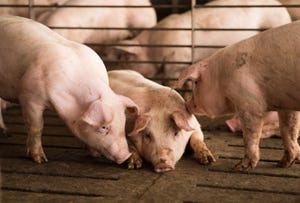Wean-to-First Service's Correlation to Farrowing Rate and Total Born / Female Farrowed
February 7, 2014

We feel that wean-to-first service interval has a high correlation to both farrowing rate and total born/female farrowing. In this month's column, we will be taking a closer look at wean-to-first service interval trends that we are seeing as we consult, monthly or quarterly, with over 120 farms in the USA and Canada. When we were analyzing the farms last month, we were seeing farms with wean-to-first service intervals below five days. We track several production traits by week and now have a data set that is nine years old. We had been noticing over the last year that there has been a nice drop in the wean-to-first-service interval during the last 18-24 months.
We think this change was caused by more farms putting in automated feeding systems in the farrowing room, or increasing the times per day sows are being fed in order to increase the amount of feed they are getting during the lactation period. We have speculated that the change could have been caused by the increasing weaning age over the last few years, however, our charts showed the weaning age from 2005 to 2011 increased about 1.77 days and then has been flat for the last two years.
To see if there is a correlation between wean-to-first service interval and farrowing rate or total born / female farrowed, we looked at our SMS Benchmarking database of 634 farms and 1.24 million females to see what the data could tell us.
We selected 585 farms that were over 20+ pigs weaned / mated female / year for the last 52 weeks. We choose 20 pigs weaned / mated female / year in order to sort out farms with major diseases breaks, startups and repops. The farms were located in both the USA and Canada.
The charts and graphs in this gallery will show you what we were able to learn by consulting our database.
As we mentioned earlier, we feel that wean-to-first service interval has a high correlation to both farrowing rate and total born / female farrowed. How do you get sows to cycle faster? Our thoughts are that aggressively feeding sows in lactation is the key. The genetic lines we have today are much better eaters and if given free access to feed in lactation will eat more feed, wean more pigs at heavier weights, and maintain body condition to cycle back faster after weaning. There is also one other area that helps, and that is feeding weaned sows more feed from weaning to breeding. Where is your sow farm at when it comes to feeding each sow as an individual, giving her all the feed she can eat?
At SMS, our mission statement is to provide “Information solutions for the swine industry.” We feel with the creation of the new Farm Benchmarking database we now have more detailed information to share with the swine industry. If your farm would like to be part of the Farm Benchmarking database, or if you have suggestions on production areas to look at, feel free to email or call us. We are looking forward to the year 2014 and being a part of the National Hog Farmer Weekly Preview team.
Previous Production Preview columns can be found at www.nationalhogfarmer.com.
If you have questions or comments about these columns, or if you have a specific performance measurement that you would like us to write about, please contact: [email protected] or [email protected].
Learn more about our findings on wean-to-first-service intervals in the following charts in this data gallery.
You May Also Like



